Boris Šuštaršič, the founder of the Muscular Dystrophy Association of Slovenia, passed away on Saturday, 25 August 2018, in Izola. We are deeply saddened and shocked by the sad news, having hoped his health would improve despite the illness that he had suffered for the past few weeks.
His name has been strongly connected with the life and work of people with muscular dystrophy ever since 1969 when, together with his supporters, he established the organisation which was then named the “Association of People with Muscular and Neuromuscular Disorders of Slovenia”. His life was very early fatefully marked by disability. Nevertheless, together with his brother Andrej, he accepted his disability as a challenge and an imperative that led him through his life.
He soon noticed that besides social organisation people with neuromuscular disorders (NMD) need employment in order to become equal citizens also in economic terms. Development of information technology enabled people with the most severe disabilities to enter the labour market. Thus, in 1997, on Šuštaršič’s initiative, the Muscular Dystrophy Association of Slovenia established company for employing disabled people “Birografika BORI”, which developed from a small print shop with only one photocopy machine into one of the most modern graphics companies in Slovenia employing about 100 workers.
Based on his own experience, Boris Šuštaršič was aware of the importance of coastal group restorative rehabilitation for people with NMD. In 1985, the Muscular Dystrophy Association of Slovenia bought the premises of the former hospital in the coastal town of Izola and thus set the foundation of the centre for developing the programme of restorative rehabilitation for people with NMD. Today, the centre operates under the name “Dom dva topola” and is one of the biggest medical rehabilitation centres for people with NMD in this part of Europe, both in terms of equipment and service quality.
More than forty years ago, Boris Šuštaršič realised that political support is required for the development of disability protection in Slovenia. That is why he became actively engaged in the former Yugoslav and Slovenian political sphere. He helped establish muscular dystrophy organisations in former Yugoslav republics and constantly maintained close contacts with them also after the dissolution of the joint state.
He also participated in political activities as a representative of social care interest groups in the National Council of the Republic of Slovenia where he served as a national councillor for three mandates and also in the last term of office. He played a decisive role in designing and development of the lottery games field. He was the initiator and the actual creator of the Foundation for Financing of Disability and Humanitarian Organisations of the Republic of Slovenia (FIHO) where he made an immense contribution to the preservation of independent and harmonised financing of disability and humanitarian organisations.
He was aware of the importance of employing disabled people in various economic sectors and therefore undertook activities through “Birografika BORI” to establish the Alliance of Companies Employing Disabled People of Slovenia which today unites 143 companies employing disabled people, including “Dom dva topola”, one of the two companies established by the Muscular Dystrophy Association of Slovenia.
In the field of disability care there is no other person who did more for Slovenian disabled people during one’s lifetime than Boriš Šuštaršič. He was a true visionary and a creator of excellent realisable ideas. Also in the field of economy it would be hard to find someone who had made such an important contribution: he was surely among the top managers in Slovenia.
Boris Šuštaršič actively contributed to integrating different groups of disabled people at the European level. He was one of the co-founders of the European Alliance of Neuromuscular Disorders (EAMDA) and its President since 2008 when EAMDA’s headquarters was moved from Malta to Slovenia. He was also an active representative of Slovenian disabled people in the European Disability Forum (EDF). Many of his innovative solutions in the field of social care were adopted by numerous European countries and transposed into their national legislation.
On his path to successes he was often met with benevolent reactions from those who envied him his achievements. He had quite a few of such opponents, but this only proves the old saying: “a cloud of dust follows a good horse”.
We have lost a great leader, mentor and colleague, whose charisma and energy filled us with optimism for dealing constructively with all the challenges that arise in our work. At the same time he gave us the ability to think analytically and separate the wheat from the chaff not only when it comes to social and disability policy but also in our own life and work.
The members and colleagues in the Muscular Dystrophy Association of Slovenia will continue the vision set by our late President who believed that the desired goals can be realised and that one should never yield in the face of difficulties. This maxim will remain our imperative in the future operation of the Association.
